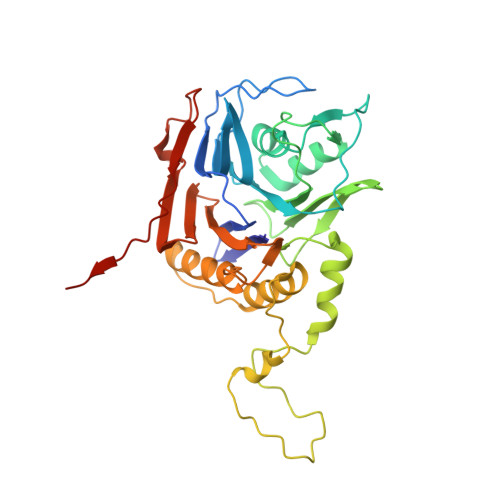Bile salt hydrolases shape the bile acid landscape and restrict Clostridioides difficile growth in the murine gut.
Foley, M.H., Walker, M.E., Stewart, A.K., O'Flaherty, S., Gentry, E.C., Patel, S., Beaty, V.V., Allen, G., Pan, M., Simpson, J.B., Perkins, C., Vanhoy, M.E., Dougherty, M.K., McGill, S.K., Gulati, A.S., Dorrestein, P.C., Baker, E.S., Redinbo, M.R., Barrangou, R., Theriot, C.M.(2023) Nat Microbiol 8: 611-628
- PubMed: 36914755
- DOI: https://doi.org/10.1038/s41564-023-01337-7
- Primary Citation of Related Structures:
7SVE, 7SVF, 7SVG, 7SVH, 7SVI, 7SVJ, 7SVK - PubMed Abstract:
Bile acids (BAs) mediate the crosstalk between human and microbial cells and influence diseases including Clostridioides difficile infection (CDI). While bile salt hydrolases (BSHs) shape the BA pool by deconjugating conjugated BAs, the basis for their substrate selectivity and impact on C. difficile remain elusive. Here we survey the diversity of BSHs in the gut commensals Lactobacillaceae, which are commonly used as probiotics, and other members of the human gut microbiome. We structurally pinpoint a loop that predicts BSH preferences for either glycine or taurine substrates. BSHs with varying specificities were shown to restrict C. difficile spore germination and growth in vitro and colonization in pre-clinical in vivo models of CDI. Furthermore, BSHs reshape the pool of microbial conjugated bile acids (MCBAs) in the murine gut, and these MCBAs can further restrict C. difficile virulence in vitro. The recognition of conjugated BAs by BSHs defines the resulting BA pool, including the expansive MCBAs. This work provides insights into the structural basis of BSH mechanisms that shape the BA landscape and promote colonization resistance against C. difficile.
- Department of Pathobiology and Population Health, College of Veterinary Medicine, North Carolina State University, Raleigh, NC, USA.
Organizational Affiliation:




















